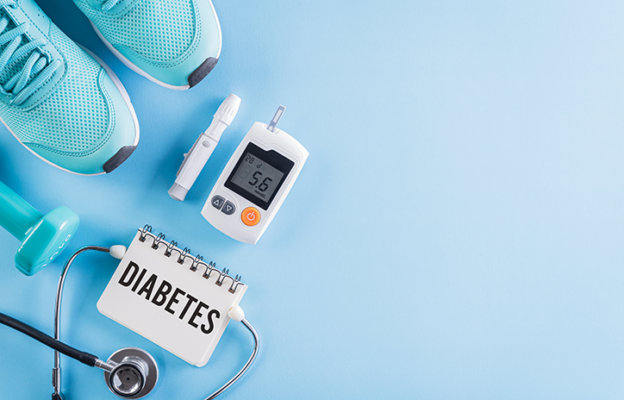A nutritious eating plan, weight and stress management, exercise, and smoking cessation can reduce your risk of developing type 2 diabetes. Studies have shown that making lifestyle changes could cut your risk of developing diabetes in half. Certain lifestyle factors play a key role in the treatment, management, and prevention of diabetes.
Best Lifestyle Changes to Prevent Diabetes
Some risk factors for diabetes, such as your genes, ethnicity, and family history, are not things that you have control over or can change. That said, there are also some modifiable risk factors that you can change to help reduce your risk. Making small, sustainable changes to your lifestyle—including how you eat, how much you move, and how you sleep—can help prevent diabetes and other chronic diseases.
Eat a Nutritious Diet
Studies have shown that eating a nutritious diet that’s rich in plants can reduce your risk of diabetes. Fruit, vegetables, nuts, seeds, and whole grains are nutrient-dense, satisfying foods. They contain filling fiber, vitamins, minerals, and antioxidants that can reduce oxidative stress—a contributing factor in the development of diabetes.
Fiber, the indigestible part of carbohydrates, helps keep you full because it is digested slowly. Diets with plenty of fiber can help manage your weight and benefit your heart health.
Choose high-fiber starches such as whole grains, root vegetables, and legumes, rather than refined carbohydrates like white bread, snack foods, and desserts. Regular consumption of root vegetables, leafy greens, and apples has been associated with a lower risk of diabetes.
Eating enough healthy fats, such as omega-3 fatty acids, and limiting your intake of trans and saturated fats can also reduce your risk of diabetes. Aim to eat fatty fish twice a week, use low-fat dairy products, and limit processed meat.
Learn about the best lifestyle changes for preventing diabetes and how to make them on a small budget.
Exercise Regularly
Exercise is important for your overall health, improving your energy and mood, and reducing your risk of heart disease, obesity, and insulin resistance (a precursor to type 2 diabetes). When your cells resist insulin, glucose is not used for energy and builds up in your blood instead. Exercise improves insulin sensitivity.
Doing a combination of aerobic and weight resistance exercises is key. Weight training increases your lean body mass, which can improve your metabolism. Having lean body mass makes your body more efficient at using calories, which can help you maintain the healthiest weight for you. In turn, that reduces your risk for diabetes.
Losing Weight
Carrying excess weight—especially in your midsection—is associated with type 2 diabetes. If you can maintain a weight that’s healthy for you or lose 5%-7% of your body weight if you are overweight, you can reduce your risk of diabetes.
Weight loss is complex and challenging for many people—especially if they have tried it before and have not found long-term success. It will help to come up with an eating plan that takes your food preferences, culture, schedule, and nutritional needs into account. Work with a registered dietitian to create a plan that will work for you and that you can stick to.
Quit Smoking
Smoking can increase insulin resistance and reduce blood flow, increasing your risk of diabetes and other diabetes-related diseases, such as atherosclerosis, heart disease, and neuropathy. Talk to your healthcare provider if you need support with quitting smoking.
Manage Stress
When you feel emotional or physical stress, your body responds with a fight-or-flight response to manage the situation. Stress doesn’t cause diabetes, but over the long term, it can lead to higher levels of a stress hormone called cortisol. Over time, that hormone can reduce insulin secretion.
If you feel chronically stressed, consider seeing a mental health professional, working with a lifestyle coach, or joining a support group. There are many different ways of dealing with stress, such as meditating, exercising, and journaling. Find a method that you enjoy and that helps you.
Get More Sleep
People with diabetes are more likely to have sleep issues, and people with sleep issues are more likely to have diabetes. Studies have shown that sleep problems can increase the risk of insulin resistance and prediabetes.
Not getting enough sleep can also disrupt your mood and is associated with an increased risk of high blood pressure, weight challenges, and a weakened immune system. Getting seven to eight hours of sleep a night may reduce your risk of developing diabetes.
Small Budget, Big Changes
You don’t need to spend much money to make sustainable, long-lasting lifestyle changes that can support your health.
One way to save money on food is to shop locally and seasonally. Purchase fruits and vegetables that are frozen—they’re just as nutrient-dense as fresh, because they’re frozen at peak freshness, which maximizes their vitamin and mineral content. They are usually less expensive than fresh produce and have a longer shelf-life, too.
Reducing food waste also reduces costs. If you are not a culinary enthusiast or feel lost in the kitchen, consider a budget-friendly meal delivery service that offers tasty and nutritious recipes.
Fancy gym memberships are not necessary to move more. Take advantage of the outdoors or download a workout streaming app to exercise at home.
Summary
Certain lifestyle changes can reduce your risk of type 2 diabetes. These changes include eating a nutritious diet with plenty of fiber, moving more, getting enough sleep, managing your stress levels, and avoiding smoking. You don’t need a big budget to get positive results, but you do need to be consistent.
Recent Posts
Poison Ivy, Oak & Sumac Safety Guide for Landscaping, Construction, and Outdoor Workers
Why Construction and Outdoor Workers Need to Know About Poison Plants The CDC reports that 80-90% of adults develop rashes from poison ivy exposure, and [...]
Multi-State Business Operations: Insurance and Compliance Strategies for Growing New Hampshire Auto Companies
Picture a successful New Hampshire automotive dealership that starts with a single location in Manchester. Over time, they expand their service territory, hire employees who [...]
Revolutionary HSA Changes in the 2025 Budget Bill: Your Complete Guide to Expanded Benefits
Introduction: A Game-Changer for Healthcare Financial Planning The 2025 federal budget reconciliation bill, recently passed by the House, introduces the most significant expansions to Health [...]




